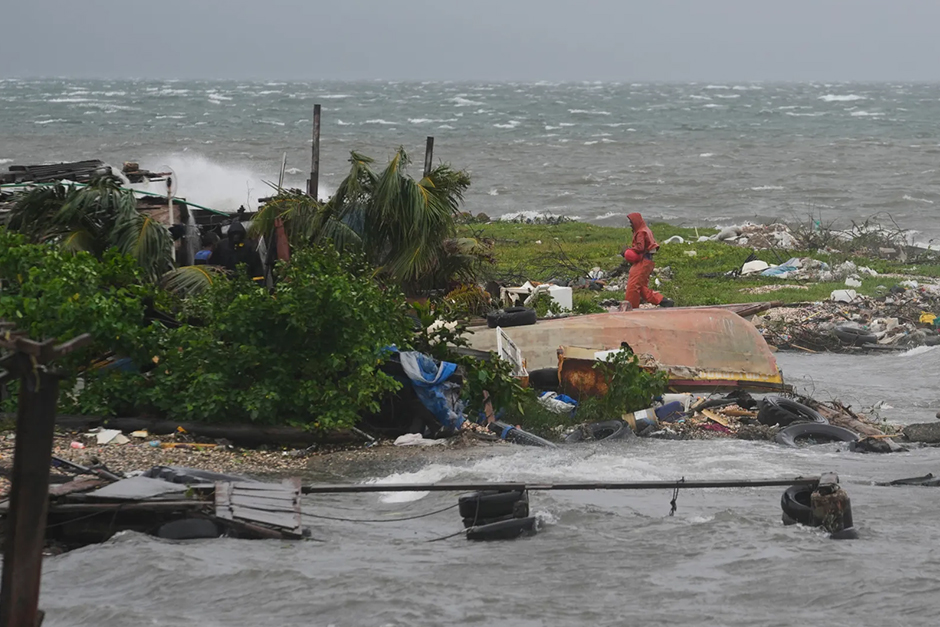As the atmospheric dance continues in the Atlantic, a name is emerging that’s sending ripples of concern across the Caribbean: Melissa. Currently a tropical storm, Melissa is slowly making its way through the region, and while the exact trajectory and intensity can shift, eyes are firmly fixed on islands like Jamaica. For a nation so dependent on its natural beauty and vulnerable to its powerful forces, the question isn’t just if Melissa will visit, but what the absolute worst it could unleash might look like.
Beyond the Brunt: Torrential Rain and Landslides
Even if Melissa doesn’t strengthen into a formidable hurricane, a tropical storm can deliver a devastating punch, particularly through relentless rainfall. For Jamaica, with its lush, mountainous terrain, this is arguably the most terrifying prospect. Prolonged, heavy downpours can quickly saturate hillsides, leading to dangerous flash floods and destructive landslides. Roads, already prone to damage, could become impassable, isolating communities and cutting off essential supply routes. Rivers can swell rapidly, overflowing their banks and inundating low-lying areas, causing significant damage to homes and infrastructure.
Maria Campbell, a long-time resident of Portland, Jamaica, voiced a common sentiment: “We’ve seen how even a ‘mere’ tropical storm can wreak havoc with relentless rain. It’s the water that worries us most, cutting off roads and threatening homes, especially in the hilly areas.”
Agricultural sectors would face a severe blow. Small farmers, the backbone of local food supply, could see their crops washed away or submerged, leading to immediate economic hardship and potential food shortages. Strong winds, even below hurricane force, can still topple trees, damage lighter structures, and cause widespread power outages, plunging communities into darkness and disrupting communication.
Coastal Carnage and Economic Ripple Effects
Jamaica’s identity and economy are intrinsically linked to its stunning coastline. The worst-case scenario for Melissa would involve significant coastal impact. Even a tropical storm can generate a substantial storm surge, pushing seawater far inland along low-lying coastal areas. This surge, combined with large, destructive waves, could erode beaches, damage vital coastal infrastructure like roads and jetties, and threaten resorts and fishing villages. Saltwater inundation would also devastate freshwater sources and agricultural lands near the coast.
The island’s critical tourism industry would undoubtedly suffer. Cancellations, closed airports, and damaged facilities would represent a massive economic blow, not just during the immediate event but also in the aftermath, as recovery efforts deter visitors. Fishing communities, many of whom live directly on the coast, could lose their boats, gear, and homes, crippling their livelihoods for months.
The long-term economic repercussions of a severe storm go beyond immediate repair costs. They include reduced productivity, potential job losses, and a strain on national resources diverted to recovery efforts, potentially hindering the country’s development trajectory. The psychological toll on communities repeatedly facing such threats is also immense, fostering a sense of anxiety and displacement.
Preparedness is Paramount
While the exact path and intensity of Melissa remain dynamic, the potential for significant disruption and damage to Jamaica is clear. The worst Jamaica can expect isn’t necessarily a monstrous Category 5 hurricane, but rather a system that delivers a relentless barrage of heavy rainfall, triggering widespread flooding and landslides, coupled with coastal impacts from storm surge and powerful waves. Such an event would test the island’s resilience, infrastructure, and the preparedness of its communities. Vigilance, timely communication, and robust emergency plans are always the best defense against nature’s fury.




